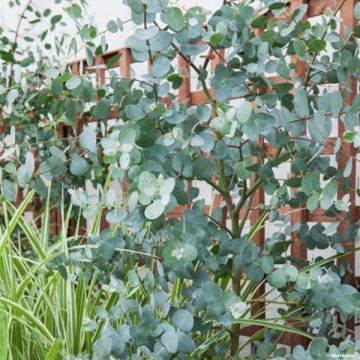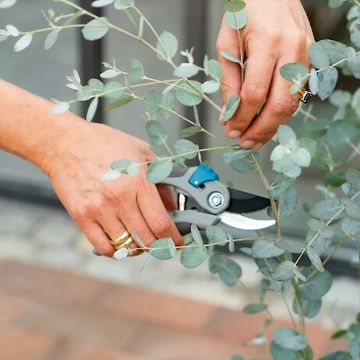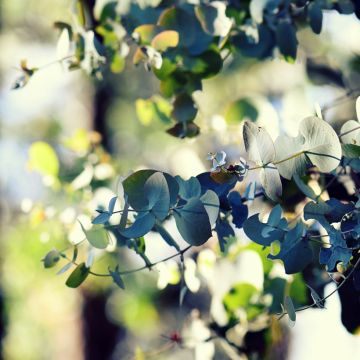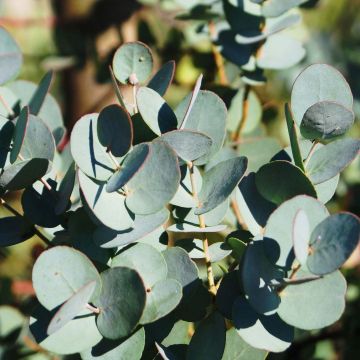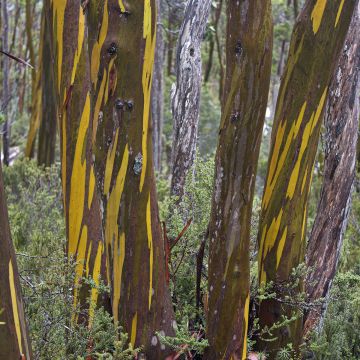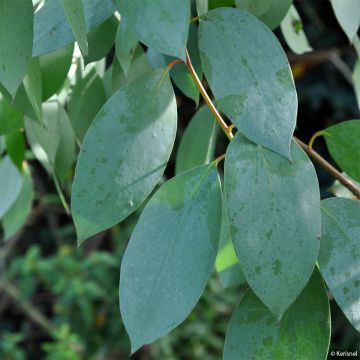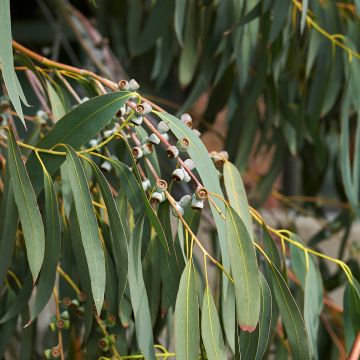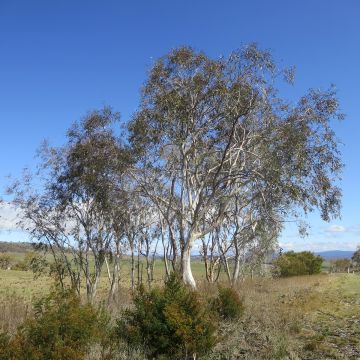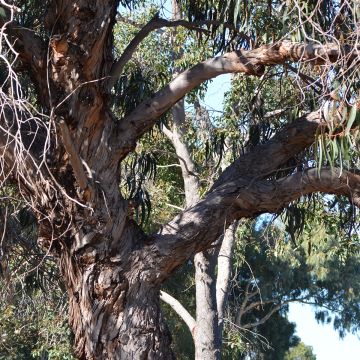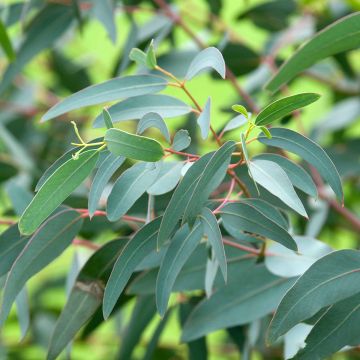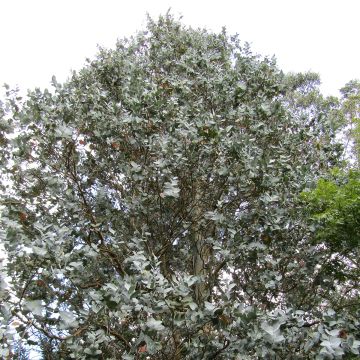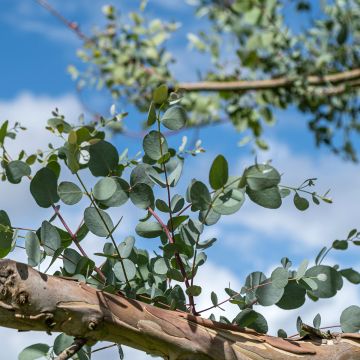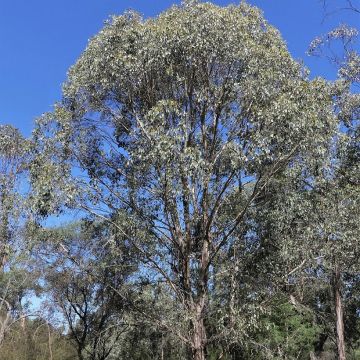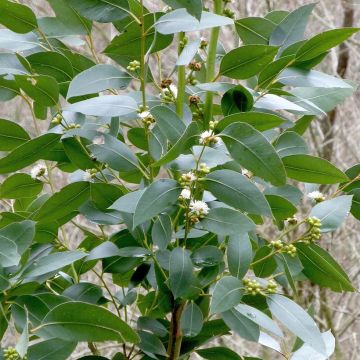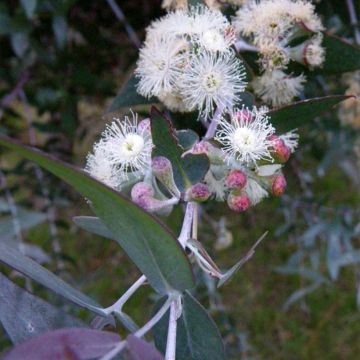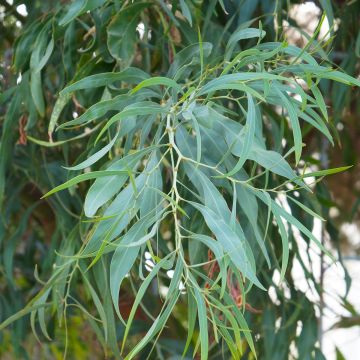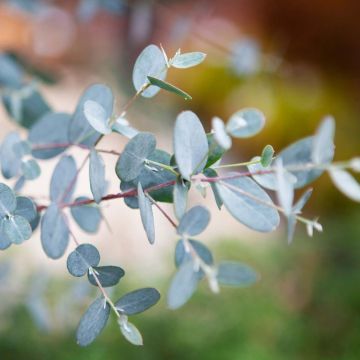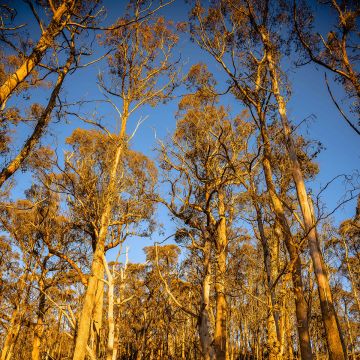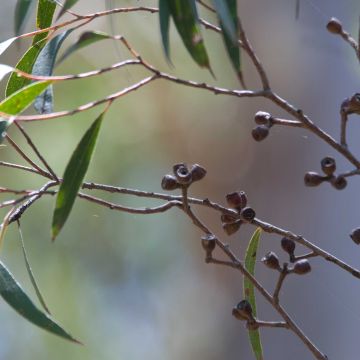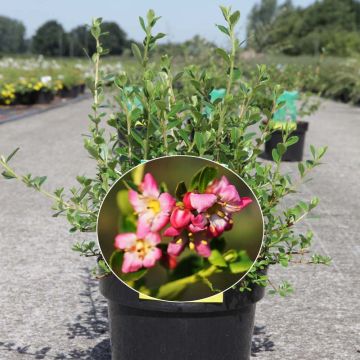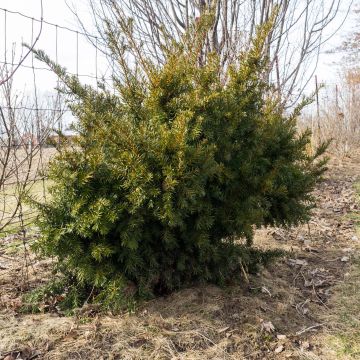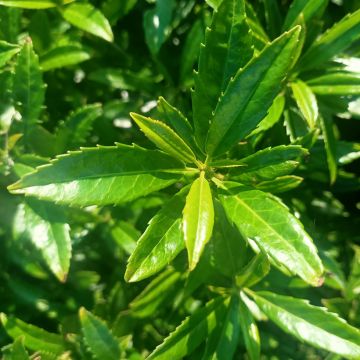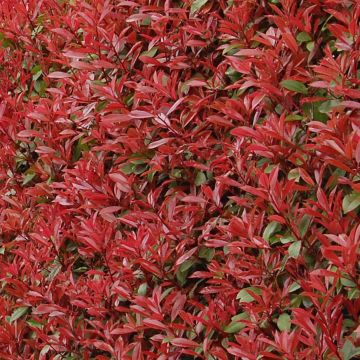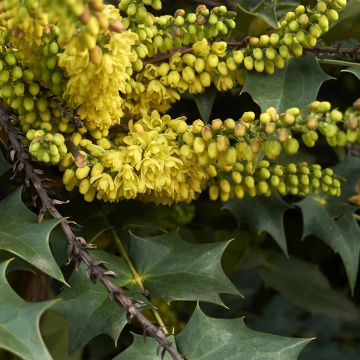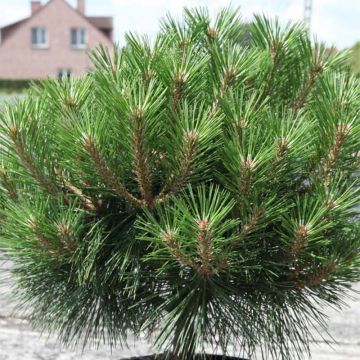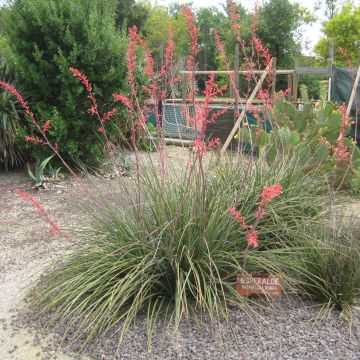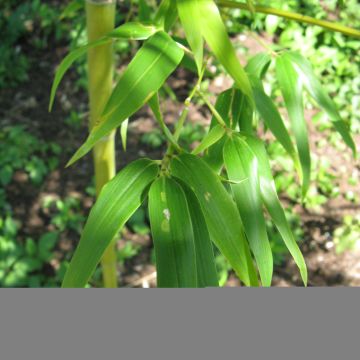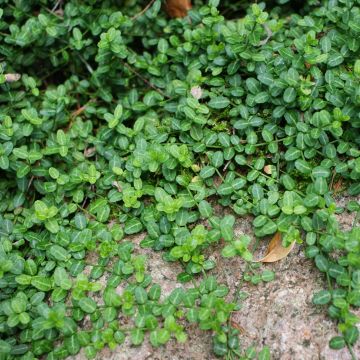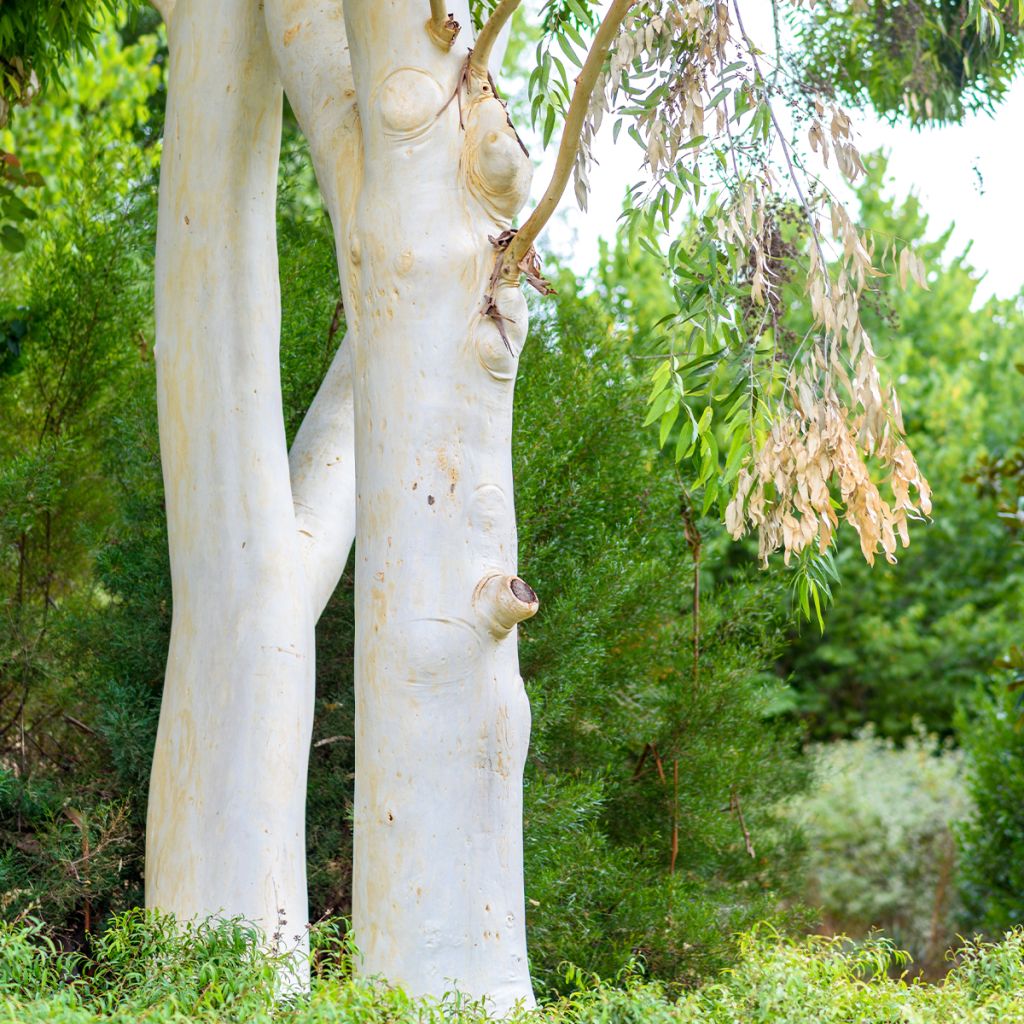

Eucalyptus dalrympleana
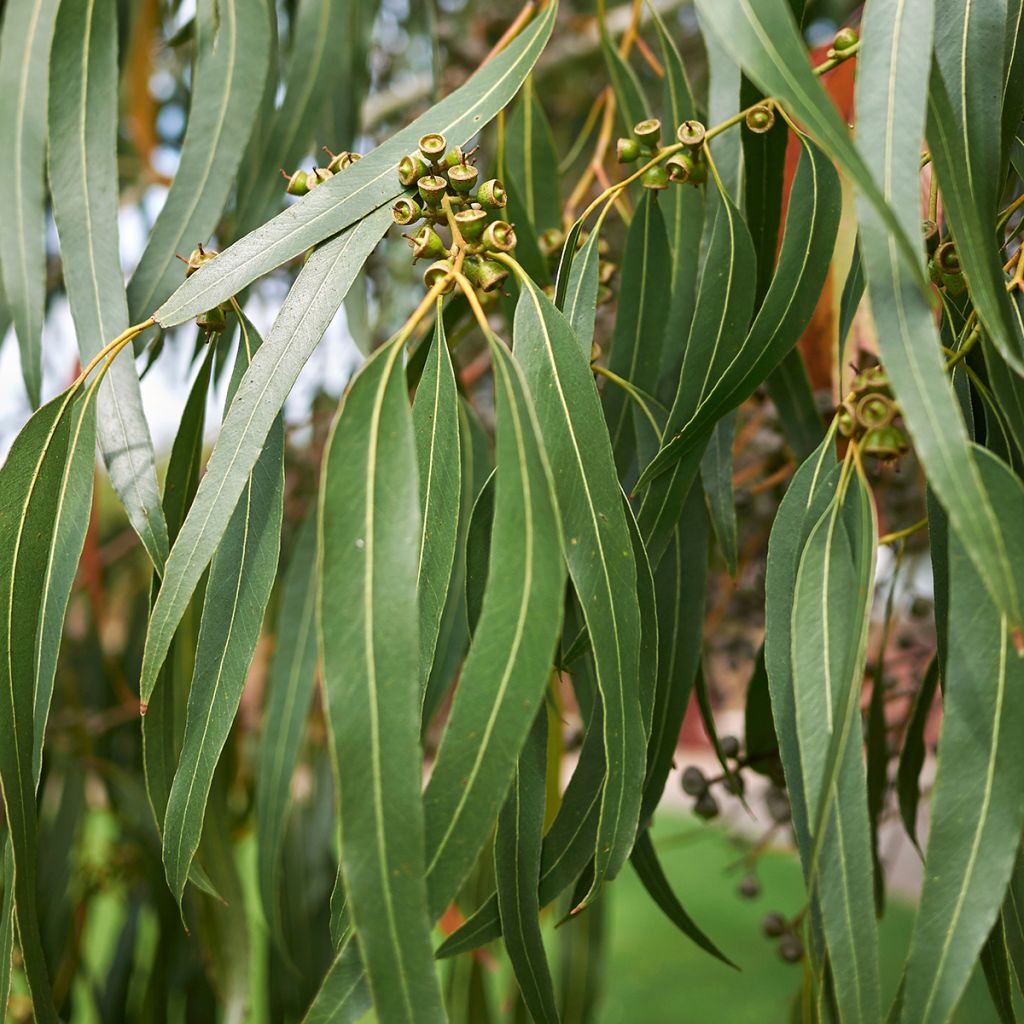

Eucalyptus dalrympleana
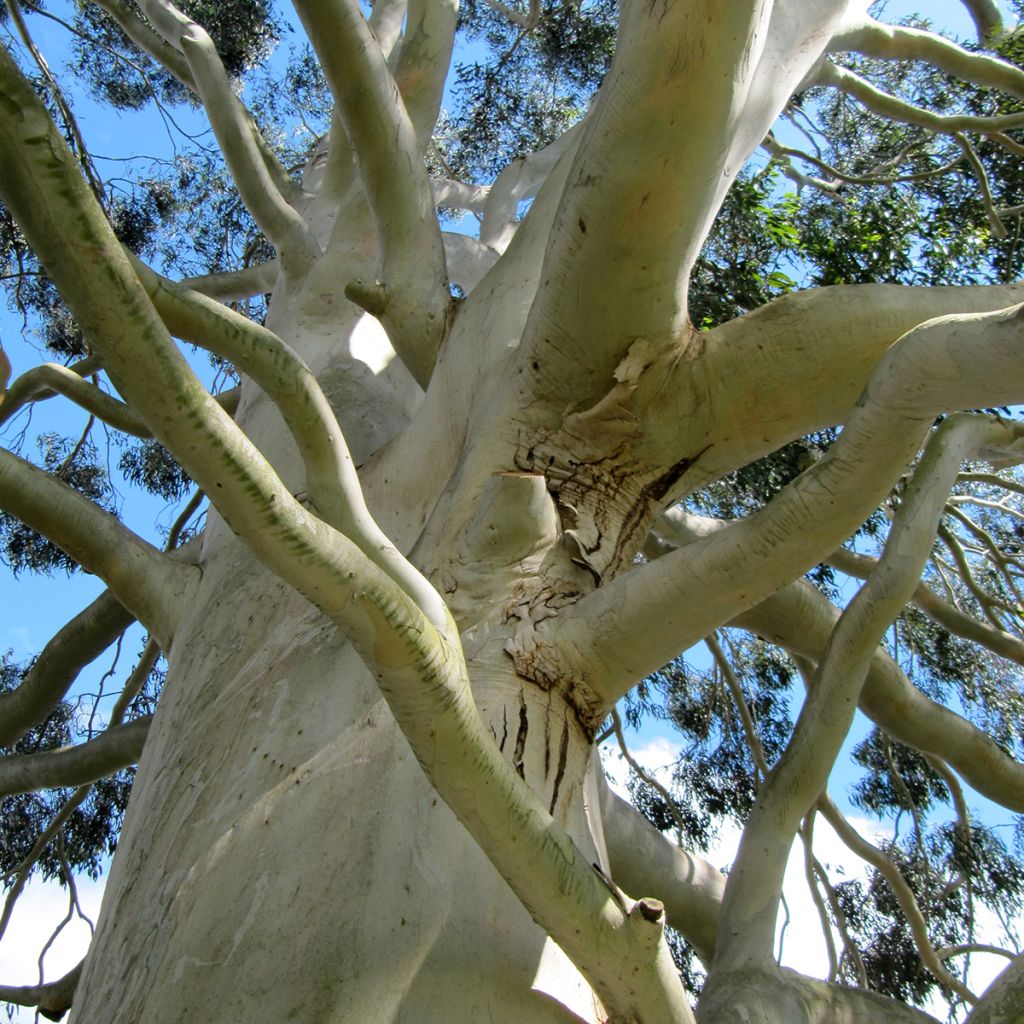

Eucalyptus dalrympleana
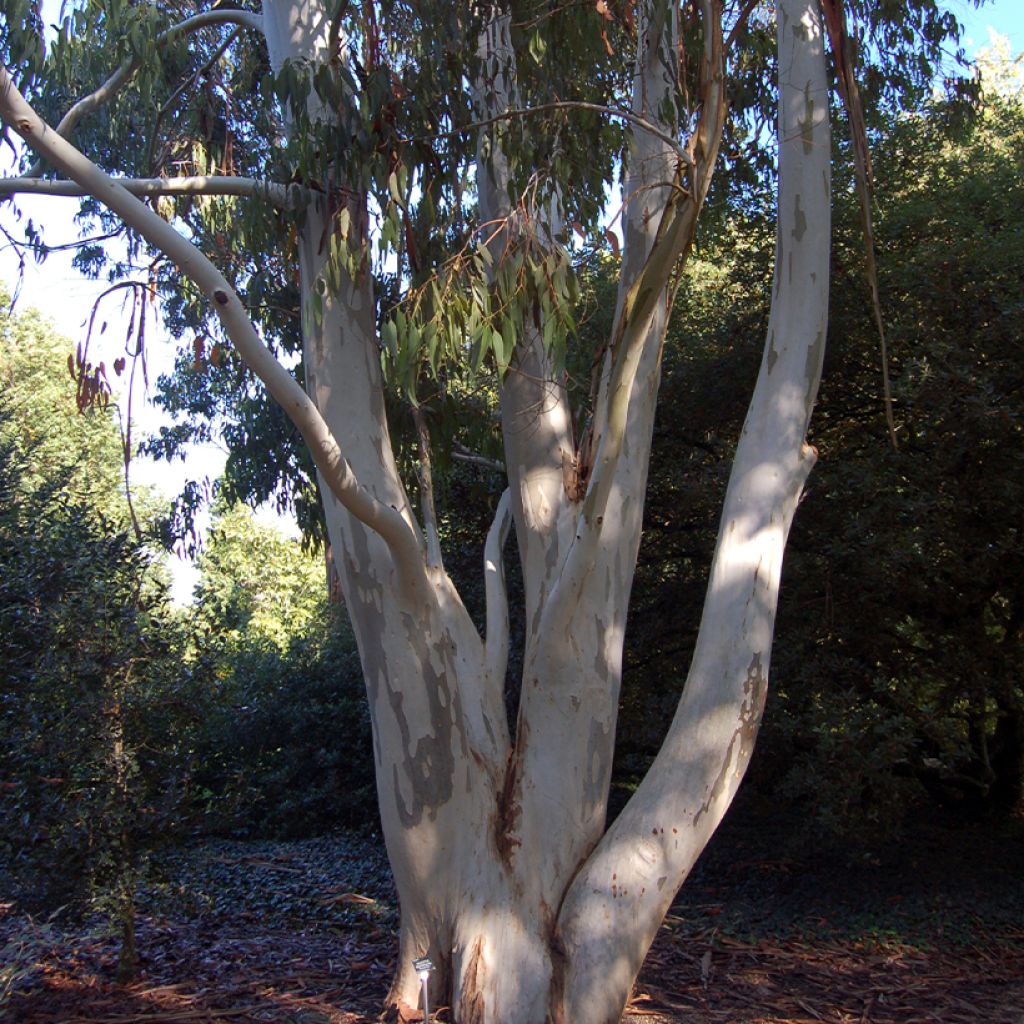

Eucalyptus dalrympleana
Eucalyptus dalrympleana
Eucalyptus dalrympleana
mountain Gum
Why not try an alternative variety in stock?
View all →This plant carries a 24 months recovery warranty
More information
We guarantee the quality of our plants for a full growing cycle, and will replace at our expense any plant that fails to recover under normal climatic and planting conditions.
From €5.90 for pickup delivery and €6.90 for home delivery
Express home delivery from €8.90.

Does this plant fit my garden?
Set up your Plantfit profile →
Description
Eucalyptus dalrympleana or Mountain White Gum is native to Australia. With rapid growth, it forms a large, majestic tree with an upright, broad, imposing habit over time. Its characteristic fragrant foliage has hints of cinnamon. Its blue-green leaves are lanceolate, pendulous, and incurved. You will also appreciate its smooth and white bark, which exfoliates in patches, marbled with grey, pink or olive green in the autumn. Its lovely white pompom-like flowers appear in spring. An ideal species for large gardens, happy in most regions, since it is hardy down to -15° C. It tolerates a slightly chalky soil.
Eucalyptus dalrympleana is a species native to Australia, from the east of New South Wales, Victoria and Tasmania. Like all Eucalyptus, it belongs to the Myrtaceae family. Its growth is rapid, ultimately forming a large elegant tree with an ovate crown measuring from 15 to 20 m (49 ft 2 in to 65 ft 7 in) in height and 4 to 8 m (13 ft 1 in to 26 ft 2 in) in spread, depending on the growing conditions. Its bark is smooth all over and creamy white. The foliage remains juvenile for 4 or 5 years with rounded, small, blue-green leaves. The adult leaves are pendulous, larger, elliptical or lanceolate and incurved. Their colour is grey-green to bright green. This foliage gives off a typical Eucalyptus fragrance when crushed, with notes of cinnamon. The flowering stretches from November to May, depending on the climate and the age. Generally, it occurs in February-March. The flowers are grouped in threes at the leaf axils in white glomerules. This Mountain White Gum generally grows as a single upright trunk. It has received an Award of Garden Merit from the Royal Horticultural Society in England.
Eucalyptus dalrympleana is an imposing tree best suited for large gardens. Easy to care for, it is resistant down to -15° C once mature. It is an ornamental plant at all stages of its growth, young and mature. Undemanding in terms of soil, it tolerates a bit of lime and grows in well-drained, neutral to slightly acidic, dry to ordinary soil, in full sun. It requires space, but has numerous ornamental qualities.
Report an error about the product description
Eucalyptus dalrympleana in pictures




Plant habit
Flowering
Foliage
Botanical data
Eucalyptus
dalrympleana
Myrtaceae
mountain Gum
Australia
Other Eucalyptus
Planting and care
Eucalyptus dalrympleana is best planted at the beginning of autumn or at the start of spring, in well-prepared soil, not too dry to moist, and in a very sunny situation. Clayey or silty soils, even chalky ones, are well tolerated. This mountain species doesn't like hot summers and dry lands much. Water well at planting, then regularly for the first year, especially in dry weather and if the summer is dry and hot. Then let nature take its course, the growth is very rapid. There's no need for pruning, but the young plant will tolerate pruning well after 3 or 4 years. In March, you can cut back near the soil to form a beautiful, dense bush, 2-3 m (6 ft 7 in-9 ft 10 in) high.
This eucalyptus loves moist and deep soil, close to ditches or the compost pile. Its roots are less powerful than those of other species, allowing it to be installed closer to foundations and installations (septic tank, for example).
Planting period
Intended location
Care
This item has not been reviewed yet - be the first to leave a review about it.
Evergreen shrubs
Haven't found what you were looking for?
Hardiness is the lowest winter temperature a plant can endure without suffering serious damage or even dying. However, hardiness is affected by location (a sheltered area, such as a patio), protection (winter cover) and soil type (hardiness is improved by well-drained soil).

Photo Sharing Terms & Conditions
In order to encourage gardeners to interact and share their experiences, Promesse de fleurs offers various media enabling content to be uploaded onto its Site - in particular via the ‘Photo sharing’ module.
The User agrees to refrain from:
- Posting any content that is illegal, prejudicial, insulting, racist, inciteful to hatred, revisionist, contrary to public decency, that infringes on privacy or on the privacy rights of third parties, in particular the publicity rights of persons and goods, intellectual property rights, or the right to privacy.
- Submitting content on behalf of a third party;
- Impersonate the identity of a third party and/or publish any personal information about a third party;
In general, the User undertakes to refrain from any unethical behaviour.
All Content (in particular text, comments, files, images, photos, videos, creative works, etc.), which may be subject to property or intellectual property rights, image or other private rights, shall remain the property of the User, subject to the limited rights granted by the terms of the licence granted by Promesse de fleurs as stated below. Users are at liberty to publish or not to publish such Content on the Site, notably via the ‘Photo Sharing’ facility, and accept that this Content shall be made public and freely accessible, notably on the Internet.
Users further acknowledge, undertake to have ,and guarantee that they hold all necessary rights and permissions to publish such material on the Site, in particular with regard to the legislation in force pertaining to any privacy, property, intellectual property, image, or contractual rights, or rights of any other nature. By publishing such Content on the Site, Users acknowledge accepting full liability as publishers of the Content within the meaning of the law, and grant Promesse de fleurs, free of charge, an inclusive, worldwide licence for the said Content for the entire duration of its publication, including all reproduction, representation, up/downloading, displaying, performing, transmission, and storage rights.
Users also grant permission for their name to be linked to the Content and accept that this link may not always be made available.
By engaging in posting material, Users consent to their Content becoming automatically accessible on the Internet, in particular on other sites and/or blogs and/or web pages of the Promesse de fleurs site, including in particular social pages and the Promesse de fleurs catalogue.
Users may secure the removal of entrusted content free of charge by issuing a simple request via our contact form.
The flowering period indicated on our website applies to countries and regions located in USDA zone 8 (France, the United Kingdom, Ireland, the Netherlands, etc.)
It will vary according to where you live:
- In zones 9 to 10 (Italy, Spain, Greece, etc.), flowering will occur about 2 to 4 weeks earlier.
- In zones 6 to 7 (Germany, Poland, Slovenia, and lower mountainous regions), flowering will be delayed by 2 to 3 weeks.
- In zone 5 (Central Europe, Scandinavia), blooming will be delayed by 3 to 5 weeks.
In temperate climates, pruning of spring-flowering shrubs (forsythia, spireas, etc.) should be done just after flowering.
Pruning of summer-flowering shrubs (Indian Lilac, Perovskia, etc.) can be done in winter or spring.
In cold regions as well as with frost-sensitive plants, avoid pruning too early when severe frosts may still occur.
The planting period indicated on our website applies to countries and regions located in USDA zone 8 (France, United Kingdom, Ireland, Netherlands).
It will vary according to where you live:
- In Mediterranean zones (Marseille, Madrid, Milan, etc.), autumn and winter are the best planting periods.
- In continental zones (Strasbourg, Munich, Vienna, etc.), delay planting by 2 to 3 weeks in spring and bring it forward by 2 to 4 weeks in autumn.
- In mountainous regions (the Alps, Pyrenees, Carpathians, etc.), it is best to plant in late spring (May-June) or late summer (August-September).
The harvesting period indicated on our website applies to countries and regions in USDA zone 8 (France, England, Ireland, the Netherlands).
In colder areas (Scandinavia, Poland, Austria...) fruit and vegetable harvests are likely to be delayed by 3-4 weeks.
In warmer areas (Italy, Spain, Greece, etc.), harvesting will probably take place earlier, depending on weather conditions.
The sowing periods indicated on our website apply to countries and regions within USDA Zone 8 (France, UK, Ireland, Netherlands).
In colder areas (Scandinavia, Poland, Austria...), delay any outdoor sowing by 3-4 weeks, or sow under glass.
In warmer climes (Italy, Spain, Greece, etc.), bring outdoor sowing forward by a few weeks.


































